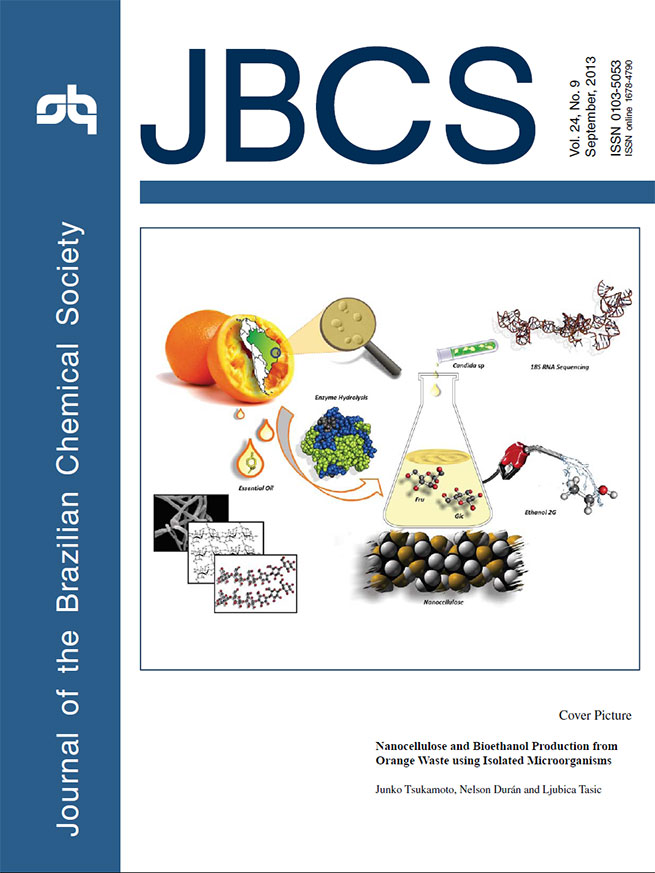vol. 24, No. 9, 2013, p. 1385-1548
Citrus processing waste from oranges (CPWO) was recycled into essential oil, bioethanol and nanocellulose. CPWO was also used as a source for isolating native microorganisms that, already adapted to this biomass, were capable to ferment hydrolyzed CPWO even in the presence of higher amounts of D-limonene. In an environmentally friendly process, we have obtained nanocellulose and nanofibers from all solid residues and this important commodity was obtained for the first time from the CPWO. Details are presented in the Article Nanocellulose and Bioethanol Production from Orange Waste using Isolated Microorganisms by Junko Tsukamoto, Nelson Durán and Ljubica Tasic on page 1537.
Nanocellulose and Bioethanol Production from Orange Waste using Isolated Microorganisms
Junko Tsukamoto; Nelson Durán; Ljubica Tasic
How to cite this article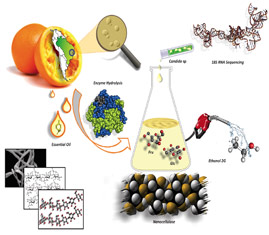
Citrus processing waste from oranges (CPWO) was recycled into essential oil, bioethanol and nanocellulose. CPWO was also used as a source for isolating native microorganisms that, already adapted to this biomass, were capable to ferment hydrolyzed CPWO even in the presence of higher amounts of D-limonene. In an environmentally friendly process, we have obtained nanocellulose and nanofibers from all solid residues and this important commodity was obtained for the first time from the CPWO. Details are presented in the Article Nanocellulose and Bioethanol Production from Orange Waste using Isolated Microorganisms by Junko Tsukamoto, Nelson Durán and Ljubica Tasic on page 1537.
https://dx.doi.org/10.5935/0103-5053.20130195
Articles J. Braz. Chem. Soc. 2013, 24(9), 1385-1395
Quantification of Pharmaceuticals and Personal Care Product Residues in Surface and Drinking Water Samples by SPE and LC-ESI-MS/MS
Maria Angelis K. Silveira; Sergiane S. Caldas; Juliana R. Guilherme; Fabiane P. Costa; Bruno de S. Guimarães; Maristela B. R. Cerqueira; Bruno M. Soares; Ednei G. Primel
How to cite this article
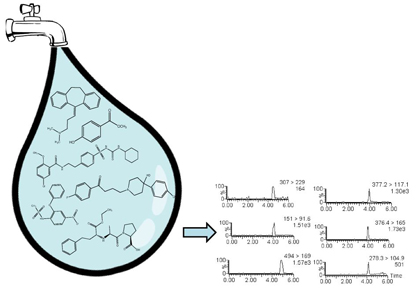
A method for determination of nimesulide, amitriptyline, enalapril, glibenclamide, haloperidol and methylparaben in water samples using a solid-phase extraction and liquid chromatography tandem mass spectrometry is presented. Good accuracy and precision were obtained.
https://dx.doi.org/10.5935/0103-5053.20130176
J. Braz. Chem. Soc. 2013, 24(9), 1396-1402
A Straightforward and Efficient Method for the Synthesis of Diversely Substituted β-Aminoketones and γ-Aminoalcohols from 3-(N,N-Dimethylamino)propiophenones as Starting Materials
Rodrigo Abonia; Danny Arteaga; Juan Castillo; Braulio Insuasty; Jairo Quiroga; Alejandro Ortíz
How to cite this article

Novel β-aminoketones and γ-aminoalcohols showing a wide structural diversity were easily obtained through a simple approach by using 3-(N,N-dimethylamino)propiophenone derivatives as key starting material. This protocol proved to be convenient as an alternative route for the synthesis of the local anesthetic Falicain® and for the topic antifungal drug Naftifine®.
https://dx.doi.org/10.5935/0103-5053.20130177
J. Braz. Chem. Soc. 2013, 24(9), 1403-1413
Optimization and Validation of FTIR Method with Tetrachloroethylene for Determination of Oils and Grease in Water Matrices
Cristina M. M. Almeida; Sofia Silvério; Cláudia Silva; Ana Paulino; Sandra Nascimento; Célia A. Revez
How to cite this article
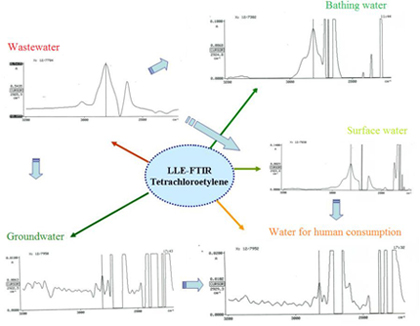
Oils and grease are important parameters for water quality and safety. A Fourier transform infrared method with tetrachloroethylene was implemented and validated, and this extraction solvent was a suitable replacement to Freon 113.
https://dx.doi.org/10.5935/0103-5053.20130179
J. Braz. Chem. Soc. 2013, 24(9), 1414-1419
Iodine-Catalyzed Prins Cyclization of Aliphatic and Aromatic Ketones
K. R. Kishore K. Reddy; Luiz F. Silva Jr.
How to cite this article

A protocol for the Prins cyclization under mild and metal-free conditions is described.
https://dx.doi.org/10.5935/0103-5053.20130178
J. Braz. Chem. Soc. 2013, 24(9), 1420-1426
Synthesis of 2,3-Diyne-1,4-naphthoquinone Derivatives and Evaluation of Cytotoxic Activity against Tumor Cell Lines
Mauro G. Silva; Celso A. Camara; Tania M. S. Silva; Anderson C. S. Feitosa; Assuero S. Meira; Cláudia Pessoa
How to cite this article

A series of naphthoquinone diynes containing aryl, alkyl, hydroxyalkyl and derivatives were synthesized. These compounds were evaluated for cytotoxicity against three tumor cell lines, presenting satisfactory results for cell growth inhibition.
https://dx.doi.org/10.5935/0103-5053.20130180
J. Braz. Chem. Soc. 2013, 24(9), 1427-1432
Chemoenzymatic Resolution of β-Azidophenylethanols by Candida antarctica and their Application for the Synthesis of Chiral Benzotriazoles
Lenilson C. Rocha; Isac G. Rosset; Gliseida Z. Melgar; Cristiano Raminelli; André L. M. Porto; Alex H. Jeller
How to cite this article

This work describes kinetic resolutions of (±)-β-azidophenylethanols, the enantiomerically enriched (R)-β-azidophenylethanols were subjected to cyclization reaction producing chiral 1,2,3-benzotriazole compounds in good yields.
https://dx.doi.org/10.5935/0103-5053.20130181
J. Braz. Chem. Soc. 2013, 24(9), 1433-1441
UV Filters in Water Samples: Experimental Design on the SPE Optimization followed by GC-MS/MS Analysis
Claudia P. da Silva; Elissandro S. Emídio; Mary R. R. de Marchi
How to cite this article

A fractional factorial design was used to optimize the procedure for solid-phase extraction to achieve reliable, quick and optimal conditions. Recovery and precision were improved with the optimized conditions for all analyzed compounds (benzophenone-3, ethylhexyl methoxycinnamate, ethylhexyl salicylate and octocrylene) for river and drinking water.
https://dx.doi.org/10.5935/0103-5053.20130182
J. Braz. Chem. Soc. 2013, 24(9), 1442-1450
Extractability of Copper and Application of Diffusive Gradients in Thin Films: Metal Availability in Contaminated Soil by Biosolids
Tatiana Garrido Reyes; Jorge Mendoza Crisosto; Yaris Velásquez Vergara
How to cite this article
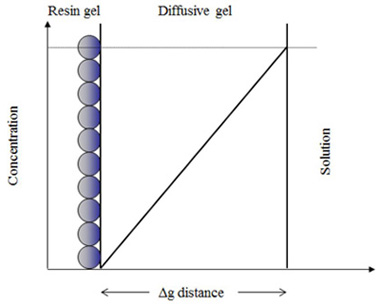
In this study, it was possible to directly relate the metal extracted by devices based on the technique of diffusion gradients in thin films (DGT) with the available metal with CaCl2 or the metal bound to soil organic matter.
https://dx.doi.org/10.5935/0103-5053.20130183
J. Braz. Chem. Soc. 2013, 24(9), 1451-1460
Degradation of the Commercial Herbicide Glyphosate by Photo-Fenton Process: Evaluation of Kinetic Parameters and Toxicity
Danilo R. de Souza; Alam G. Trovó; Nelson R. Antoniosi Filho; Marcos A. A. Silva; Antonio E. H. Machado
How to cite this article
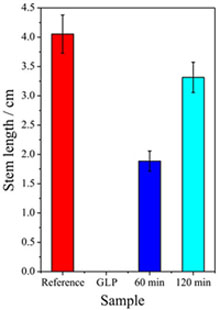
Toxicity reduction (74%) in aqueous solutions containing glyphosate after photocatalytic treatment using photo-Fenton process
https://dx.doi.org/10.5935/0103-5053.20130185
J. Braz. Chem. Soc. 2013, 24(9), 1461-1468
Simultaneous Voltammetric Determination of Acetaminophen and Caffeine at a Graphite and Polyurethane Screen-Printed Composite Electrode
Thalita R. Saciloto; Priscila Cervini; Éder T. G. Cavalheiro
How to cite this article
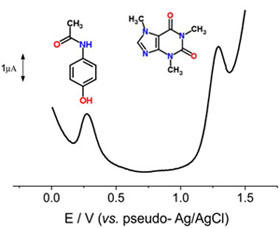
A screen-printed electrode based on a graphite and polyurethane resin composite (EIGPU) was applied in the simultaneous determination of acetaminophen and caffeine in pharmaceutical samples analysis. In good agreement with the declared lable contents as well as HPLC results. The figure depicts the DPV curve of a solution containing both analytes at the EIGPU under optimized conditions as described in the text.
https://dx.doi.org/10.5935/0103-5053.20130186
J. Braz. Chem. Soc. 2013, 24(9), 1469-1477
Construction of Analytical Curve Fit Models for Simvastatin using Ordinary and Weighted Least Squares Methods
Flávia D. Marques-Marinho; Ilka A. Reis; Cristina D. Vianna-Soares
How to cite this article

The studentized residual plot of the ordinary least squares regression (OLSM) does not show homoscedastic variance since response variance increases with the mean response, violating the OLSM assumptions. With WLSM approach adoption, the heteroscedasticity problem was corrected by using different weights for the observations.
https://dx.doi.org/10.5935/0103-5053.20130187
J. Braz. Chem. Soc. 2013, 24(9), 1478-1486
Microwave-Assisted Extraction Combined with HPLC-MS/MS for Diagnosis of Fungal Contamination in Building Materials
Daria Horbik; Aldona Łowińska-Kluge; Zbigniew Górski; Ewa Stanisz; Agnieszka Zgoła-Grześkowiak
How to cite this article
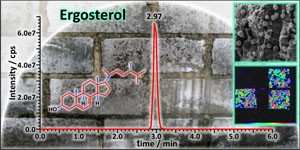
The ergosterol determination by high performance liquid chromatography-tandem mass spectrometry as a sensitive indicator of fungal contamination of building materials is presented. The presence of fungi was confirmed with the use of electron microscope and bioluminescence measurements.
https://dx.doi.org/10.5935/0103-5053.20130191
J. Braz. Chem. Soc. 2013, 24(9), 1487-1496
The Ru—NO Bonding in Nitrosyl-[poly(1-pyrazolyl)borate]ruthenium Complexes: a Theoretical Insight based on EDA
Giovanni F. Caramori; André G. Kunitz; Daniel F. Coimbra; Leone C. Garcia; David E. P. Fonseca
How to cite this article
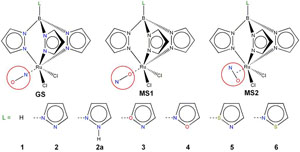
The effects of the pseudoaxial substituents (L) on the lability of {Ru—NO}6 bond in nitrosyl-[poly(1-pyrazolyl)borate]ruthenium complexes are investigated at the light of energy decomposition analysis (Su-Li EDA).
https://dx.doi.org/10.5935/0103-5053.20130188
J. Braz. Chem. Soc. 2013, 24(9), 1497-1503
Enantioselective Synthesis of both (—)-(R)- and (+)-(S)-Angustureine Controlled by Enzymatic Resolution
Gaspar Diaz; Marisa A. N. Diaz; Marco A. Reis
How to cite this article
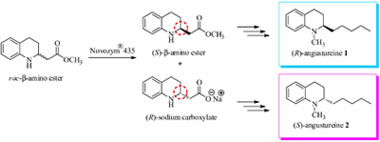
This work describes a new synthesis of (—)-(R)- and (+)-(S)-angustureine enantiomers from a racemic β-amino ester controlled by kinetic enzymatic resolution. Synthesis of both alkaloids was achieved in good yields and excellent enantiomeric excesses.
https://dx.doi.org/10.5935/0103-5053.20130189
J. Braz. Chem. Soc. 2013, 24(9), 1504-1511
Determination of Propylthiouracil in Pharmaceuticals by Differential Pulse Voltammetry Using a Cathodically Pretreated Boron-Doped Diamond Electrode
Elen Romão Sartori; Aline Barrios Trench; Romeu C. Rocha-Filho; Orlando Fatibello-Filho
How to cite this article

A cathodically pretreated boron-doped diamond electrode and differential pulse voltammetry are used to determine propylthiouracil (PTU). For the first time in the literature, a non-modified solid electrode is used to analyze PTU in pharmaceutical formulations, with results in agreement with those of a comparative titration method.
https://dx.doi.org/10.5935/0103-5053.20130190
J. Braz. Chem. Soc. 2013, 24(9), 1512-1519
Synthesis and Characterization of a Novel Stationary Phase, Si-Zr/Ti(PMTDS), Based upon Ternary Oxide Support for High Performance Liquid Chromatography
Maura R. Amparo; Fabiana A. Marques; Anizio M. Faria
How to cite this article
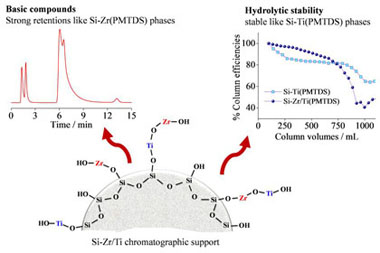
Si-Zr/Ti(PMTDS) is a new stationary phase for reversed-phase high-performance liquid chromatography that presents retention properties similar to those zirconized silica-based PMTDS phases and hydrolytical stability similar to those titanized silica-based PMTDS phases.
https://dx.doi.org/10.5935/0103-5053.20130192
J. Braz. Chem. Soc. 2013, 24(9), 1520-1529
Application of Box-Behnken Design to the Study of Fatty Acids and Antioxidant Activity from Enriched White Bread
Swami A. Maruyama; Sylvio V. Palombini; Thiago Claus; Fabiana Carbonera; Paula F. Montanher; Nilson E. de Souza; Jesuí V. Visentainer; Sandra T. M. Gomes; Makoto Matsushita
How to cite this article
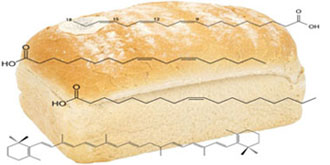
This work determined proximate/fatty acid compositions and antioxidant activity of breads using a Box-Behnken design composed of fifteen experiments and three factors. The studied breads had altered baking times and the wheat flour used was partially substituted by chia seeds and carrot leaves.
https://dx.doi.org/10.5935/0103-5053.20130193
J. Braz. Chem. Soc. 2013, 24(9), 1530-1536
Application of Solid Phase Microextraction and Gas Chromatography for the Determination of BTEX in Solid Petroleum Residues
Morgana Frena; Alessandra Emanuele Tonietto; Luiz Augusto dos Santos Madureira
How to cite this article
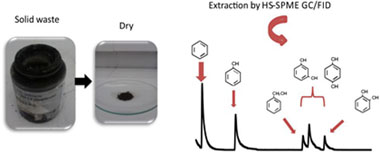
A simple and fast method was developed for the determination of BTEX (benzene, toluene, ethylbenzene and xylene) in solid waste and solutions obtained from leaching applying procedures detailed in the ABNT NBR 10004/2004Brazilian standard for the classification of solid residues.
https://dx.doi.org/10.5935/0103-5053.20130194
J. Braz. Chem. Soc. 2013, 24(9), 1537-1543
Nanocellulose and Bioethanol Production from Orange Waste using Isolated Microorganisms
Junko Tsukamoto; Nelson Durán; Ljubica Tasic
How to cite this article
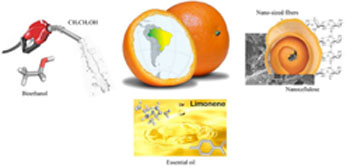
This work describes recycling of citrus processing waste from oranges (CPWO) and a production of: essential oil, bioethanol and nanocellulose. This work also explores fermentation abilities of microorganisms isolated from the target biomass.
https://dx.doi.org/10.5935/0103-5053.20130195
Short Report J. Braz. Chem. Soc. 2013, 24(9), 1544-1548
Phenolic Compounds from the Roots of Valeriana officinalis var. latifolia
Peng-Cheng Wang; Xin-Hui Ran; Huai-Rong Luo; Qing-Yun Ma; Yu-Qing Liu; Jun Zhou; You-Xing Zhao
How to cite this article

A new benzofuran neolignan, dihydrodehydrodiconiferyl alcohol 9-isovalerate, along with ten known phenolic compounds were isolated from the roots of Valeriana officinalis var. latifolia.
https://dx.doi.org/10.5935/0103-5053.20130184
Online version ISSN 1678-4790 Printed version ISSN 0103-5053
Journal of the Brazilian Chemical Society
JBCS Editorial and Publishing Office
University of Campinas - UNICAMP
13083-970 Campinas-SP, Brazil
Free access










